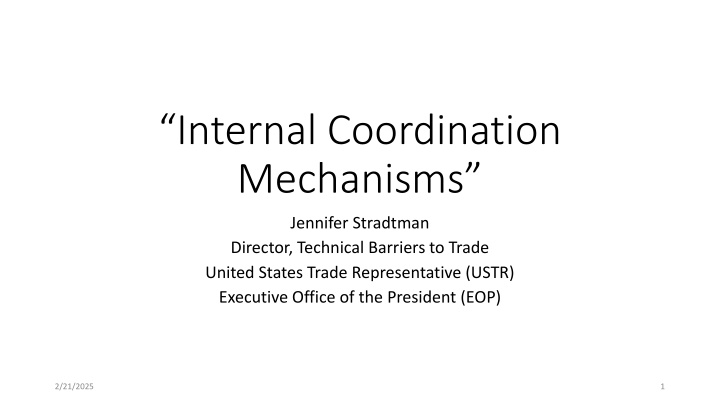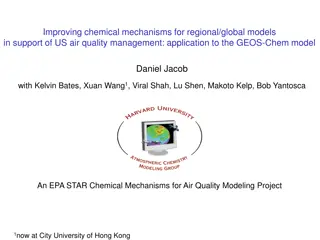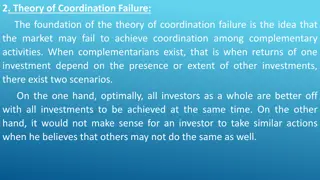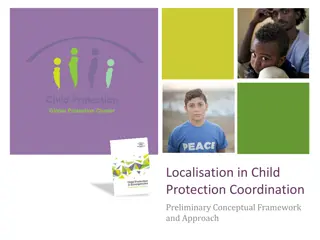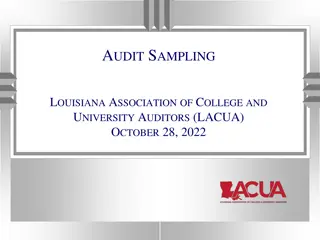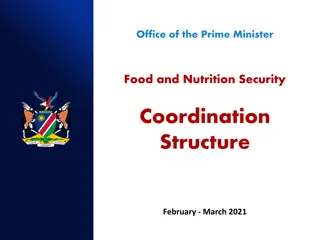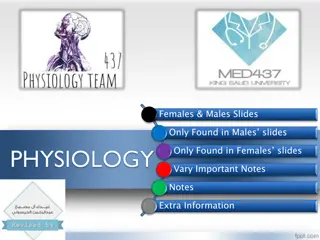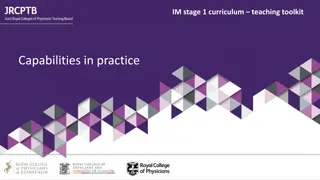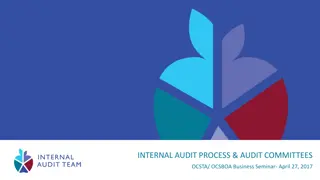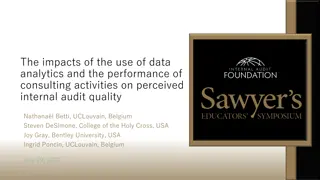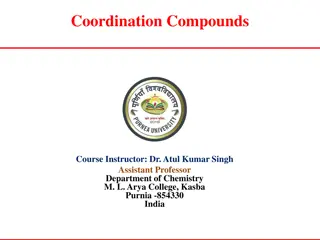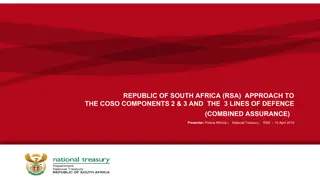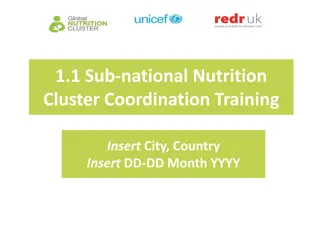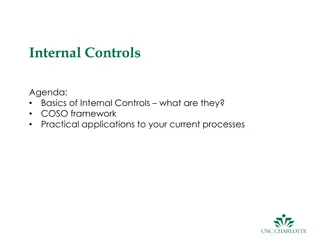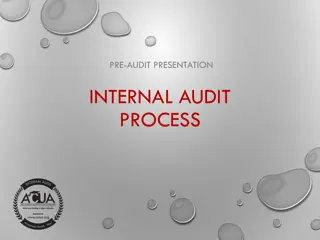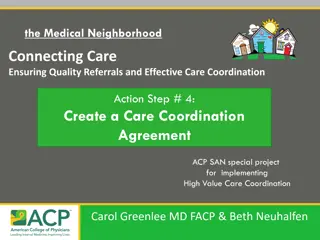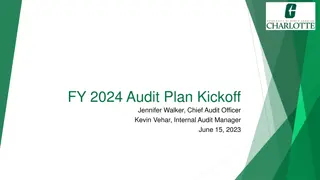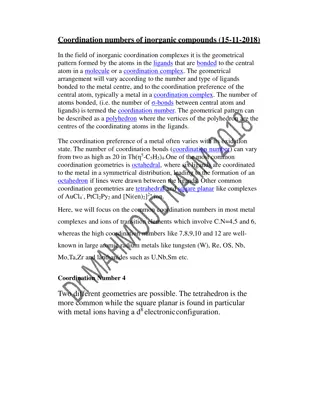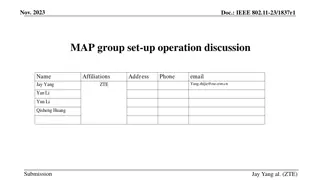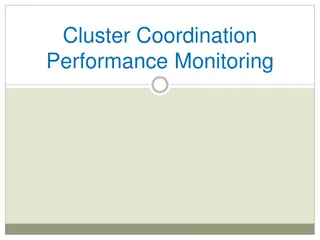“Internal Coordination Mechanisms"
Successful implementation of Technical Barriers to Trade (TBT) policies requires key internal coordination mechanisms involving various government agencies like OMB, NIST, USDA, and USTR. Interagency coordination plays a crucial role in the rulemaking process to ensure regulatory compliance and effective public engagement.
Download Presentation

Please find below an Image/Link to download the presentation.
The content on the website is provided AS IS for your information and personal use only. It may not be sold, licensed, or shared on other websites without obtaining consent from the author.If you encounter any issues during the download, it is possible that the publisher has removed the file from their server.
You are allowed to download the files provided on this website for personal or commercial use, subject to the condition that they are used lawfully. All files are the property of their respective owners.
The content on the website is provided AS IS for your information and personal use only. It may not be sold, licensed, or shared on other websites without obtaining consent from the author.
E N D
Presentation Transcript
Internal Coordination Mechanisms Jennifer Stradtman Director, Technical Barriers to Trade United States Trade Representative (USTR) Executive Office of the President (EOP) 2/21/2025 1
Successful implementation of TBT requires key internal coordination mechanisms Office of Management and Budget (OMB) coordination of domestic regulation through EO 12866 and Administrative Procedures Act. National Institute of Standards and Technology (NIST) coordination role as the Notification Authority, U.S. Inquiry Point and manager of Notify U.S. United States Department of Agriculture (USDA) coordination of U.S. Government comments on WTO Member notifications on agricultural products. USTR Coordination of Intergovernmental Affairs and Public Engagement Intergovernmental Policy Advisory Committee (State Coordination) Industry and Agriculture Trade Advisory Committees (Industry Coordination) USTR Coordination of the Trade Policy Staff Committee (TPSC) 2/21/2025 2
Interagency Coordination of Rulemaking: OMB Office of Information and Regulatory Affairs Role of the Office of Information and Regulatory Affairs (OIRA) OIRA was established by the Paperwork Reduction Act of 1980, partially in response to the explosion in regulation that occurred in the 1970s and earlier in the U.S. As part of the OMB, OIRA is a central body that has special standing with the agencies. OIRA is the lead division of OMB for regulatory oversight and interagency review of significant regulations. OIRA also develops and oversees government-wide policies in the areas of information collection, information policy, privacy, and statistical and science policy. 2/21/2025 3
Review of Rulemaking Process Identify Public Health Issue Define Scope of Regulatory Action Assess all Regulatory Options Prepare Draft Rule OMB & Interagency Review of Draft Rule Stages of the rulemaking process where TBT coordination occurs. Draft Rule Published for Notice & Comment Review & Analyze Public Comments Draft Final Rule OMB & Interagency Review of Final Rule Publish & Notify Final Regulation Publish Guidance Document Review Effectiveness of Regulation 2/21/2025 4
Regulatory Planning and Review (EO 12866) Pre-public consultation Regulator drafts TR or CAP OMB coordinates interagency views USTR reviews TR or CAP for consistency with U.S. trade agreement obligations Federal Regulation Internal coordination mechanisms to notify U.S. Federal TRs and CAPs. Regulator publishes draft TR or CAP in Federal Register Public Comment Period Administrative Procedures Act NIST reviews Federal Register daily NIST determines TRs and CAPs to notify; consults with Regulator and USTR as needed Notifies WTO for same comment period as contained in Federal Register WTO Notification 2/21/2025 5
Comment received on WTO Notification U.S. Inquiry Point receives and acknowledges comment. U.S. Inquiry Point sends comment to Regulator and posts in Federal Register docket. When final TR or CAP is published in the FR, Regulator responds to all substantive comments. Federal Regulation Internal coordination mechanisms to respond to WTO Member comment on a U.S. Federal TR or CAP. USTR receives a request to consult on U.S. WTO Notification. USTR contacts POC from Trade Policy Staff Committee to address questions or concerns. USTR, Regulator or U.S. Embassy delivers responses. Consultation requested on WTO Notification 2/21/2025 6
The Office of Intergovernmental Affairs and Public Engagement (IAPE) The Office of Intergovernmental Affairs and Public Engagement (IAPE) leads USTR's public outreach efforts to state and local governments, both small and large business and agricultural communities, and labor, environmental and consumer groups. Intergovernmental Policy Advisory Committee (coordination with States) Agriculture Trade Advisory Committees (coordinated jointly with USDA) Industry Trade Advisory Committees (coordinated jointly with USDOC). 2/21/2025 7
State publishes draft TRs and CAPs in state journal for notice and comment period. Publication of State Measures State Regulation Internal coordination mechanisms to notify U.S. State TRs and CAPs. U.S. Inquiry Point regularly reviews database of state regulations. USTR reviews list of State TRs and CAPs to notify. U.S. Inquiry Point notifies State TR or CAP. WTO Notification 2/21/2025 8
Comment received on WTO Notification U.S. Inquiry Point receives and acknowledges comment. U.S. Inquiry Point sends comment to State Regulator . State Regulation Internal coordination mechanisms to respond to WTO Member comment on a U.S. State TR or CAP. USTR receives a request to consult on U.S. WTO Notification. USTR contacts USTR IAPE, and USTR IAPE contacts the State Governor s Office. State Governor s Office connects USTR with State Regulator for consultation. USTR, State Regulator or U.S. Embassy delivers responses. Consultation requested on WTO Notification 2/21/2025 9
U.S. Inquiry Point, USDA FAS Transmits U.S. Comments on WTO Notifications Federal Agencies and Industry Review notifications and comments on draft TRs and CAPs USDA FAS reviews notifications and drafts comments on high impact agricultural notifications, finalizes with interagency, transmits comments via Post or Inquiry Point U.S. Inquiry Point and USDA FAS Post Inquiry Point transmits comments on behalf of industry to WTO members Inquiry Point records and transmits outgoing comments and incoming comment responses, shares with interagency, industry USDA FAS coordinates review, drafting, and submission of comments on agricultural TBT notifications Inquiry Point, USDA FAS receives responses and shares with interagency and industry for review, next steps, additional engagement by USG USDA coordinated submission of 111 comments out of 919 TBT notifications reviewed in FY 2018 Comment Responses 2/21/2025 10
Industry Comments on WTO Notifications U.S. Inquiry Point service to distribute WTO notifications on a daily basis to U.S. interests. Notify U.S. Internal coordination mechanisms to comment on other WTO Member Notifications. Receives U.S. Industry Comment and transmits to WTO Member. Inquiry Point provides comment guidance on to U.S. industry: https://tsapps.nist.gov/notifyus/data/guidan ce/guidance.cfm U.S. Inquiry Point For FY 18, the U.S. Inquiry Point has a record of 282 U.S. comments sent. Some of the comments concern actions that were not notified to the TBT Committee. Industry may opt to directly engage other WTO Member on its comments or request assistance from the U.S. Government to convey comments. Consultation 2/21/2025 11
Trade Policy Staff Committee The U.S. Trade Representative has primary responsibility, with the advice of the interagency trade policy organization, for developing and coordinating the implementation of U.S. trade policy. Under the Trade Expansion Act of 1962, Congress established an interagency trade policy mechanism to assist with the implementation of these responsibilities. USTR executes its institutional interagency role through two processes, the Trade Policy Review Group (TPRG) and the Trade Policy Staff Committee (TPSC) - both chaired by USTR. 2/21/2025 12
Coordination of STCs to WTO TBT Committee USTR calls TPSC Subcommittee on TBT meeting USDA and USDOC present potential STCs for meeting (8 weeks in advance) USTR and other agencies may add or subtract issues TPSC Preparation Internal Coordination on presenting STCs to WTO Members USDA and USDOC post draft papers for interagency comments in an database all agencies can access (six weeks in advance of meeting). Agencies comment and USTR accepts comments. If agencies are conflicted on any issue, we set meetings to resolve. Declare STCs 20 days in advance of the meeting. USTR Geneva coordinates with other Members on concerns. TPSC Preparation Possible to consult with Industry and Agricultural Trade Advisory Committees meeting during this period. Consultation with Industry 2 day formal clearance process of all STCs TPSC Clearance 2/21/2025 13
Thank you! Jennifer Stradtman Director, Technical Barriers to Trade Office of the United States Trade Representative 202-395-4498 Jennifer_A_Stradtman@ustr.eop.gov 2/21/2025 14
